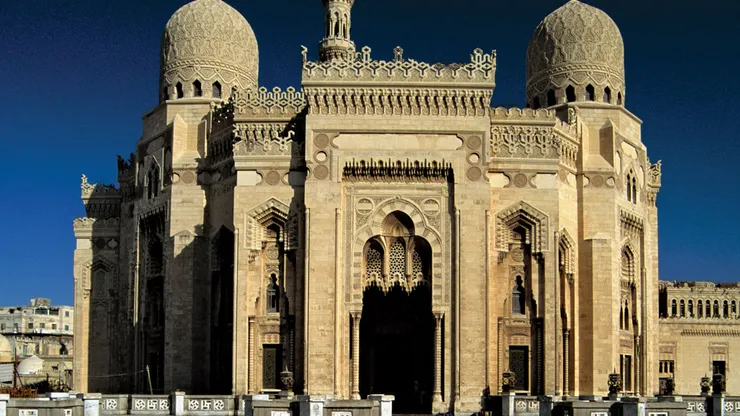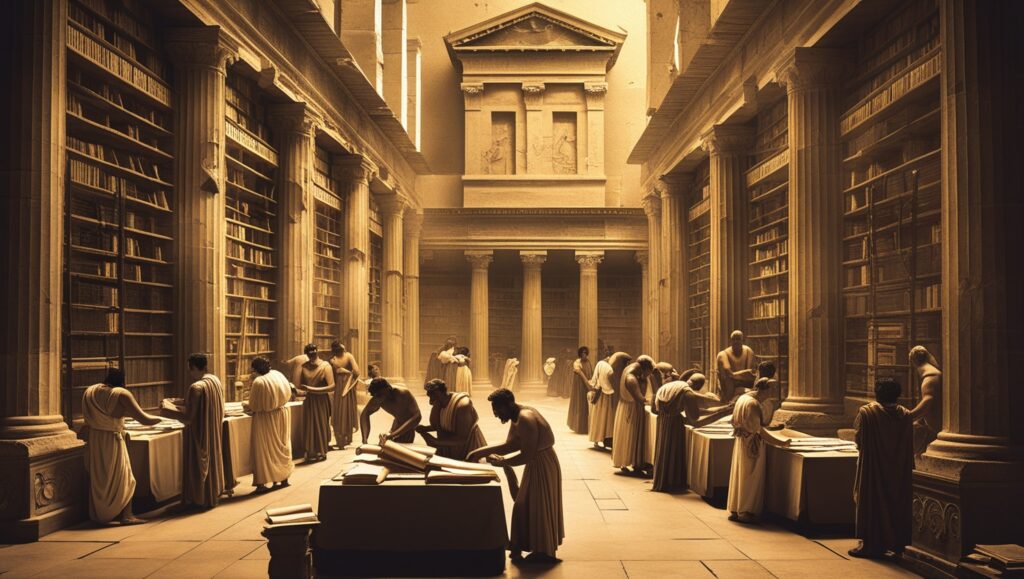The Library of Alexandria is one of the most captivating and enigmatic institutions of the ancient world. Often hailed as a symbol of knowledge, learning, and human aspiration, the library’s history is steeped in both grandeur and mystery. While much about the Library of Alexandria history remains speculative, its legacy continues to influence how we think about the pursuit of knowledge and the preservation of human thought.
Was the Library of Alexandria Real?
Yes, the Library of Alexandria was a real institution. Located in the Egyptian city of Alexandria, the library was established during the reign of Pharaoh Ptolemy II Philadelphus in the 3rd century BCE. It was part of a larger cultural complex known as the Mouseion, which served as a hub for scholars, scientists, and philosophers from across the Mediterranean and beyond.
The idea behind the library was ambitious: to collect all the world’s knowledge in one place. The Ptolemaic rulers sent emissaries far and wide to acquire scrolls and texts. Ships docking in Alexandria were reportedly searched for books, which were copied and added to the collection. While it’s difficult to determine how many texts the library housed, estimates range from 40,000 to 400,000 scrolls, covering subjects such as astronomy, mathematics, medicine, literature, and philosophy.
What Did the Library of Alexandria Look Like?
The exact appearance of the Library of Alexandria remains unknown, as no physical remnants of the structure have been definitively identified. However, historical accounts suggest that it was an architectural marvel, befitting its reputation as a repository of the world’s knowledge.

Descriptions indicate that the library was part of the Mouseion, which included lecture halls, gardens, and living quarters for scholars. The library itself likely featured rows of shelves or storage spaces for scrolls and papyri. Scholars have theorized that it incorporated elements of Greek and Egyptian architectural styles, blending grandeur with functionality. The grandeur of the library’s design was likely intended to reflect its purpose as a monument to human intellect and curiosity.
Why Was the Library of Alexandria Important?
The Library of Alexandria wasn’t just a storehouse for books; it was a hub of intellectual activity. Scholars who worked there made significant contributions to various fields of knowledge, setting the stage for advancements that would shape the ancient and modern worlds.
- A Center for Scholarship: The library attracted intellectuals such as Euclid, the father of geometry, and Eratosthenes, who calculated the Earth’s circumference with remarkable accuracy. It also housed works by poets like Callimachus and playwrights like Menander. The presence of these scholars turned the library into a dynamic center of learning and debate.
- Cross-Cultural Exchange: Alexandria’s location at the crossroads of the Mediterranean made it a melting pot of cultures. The library facilitated the exchange of ideas between Greek, Egyptian, Indian, and Mesopotamian scholars, fostering a spirit of collaboration and innovation. This blending of cultures enriched the intellectual output of the era and created a foundation for later scientific and philosophical advancements.
- Preservation of Knowledge: The library’s mission to collect and copy texts ensured the survival of works that might otherwise have been lost to history. Even though much of the library’s collection was ultimately destroyed, the texts it preserved laid the foundation for later intellectual achievements. By safeguarding knowledge from different parts of the world, the library played a crucial role in preserving humanity’s collective heritage.
How Big Was the Library of Alexandria?
The size of the Library of Alexandria is a subject of much debate. Ancient sources provide varying estimates, but many historians believe it was one of the largest libraries of the ancient world. Some accounts suggest it held up to 400,000 scrolls, though others argue the number was closer to 40,000. Regardless of the exact figure, the scale of the library’s ambition was unprecedented.

The library was so vast that it reportedly required an additional branch, located in the Serapeum, a temple dedicated to the Greco-Egyptian deity Serapis. This expansion highlights the scale of the Ptolemies’ ambition and their commitment to the preservation of knowledge. The Serapeum was said to house overflow scrolls and may have served as a secondary research center for scholars.
Was the Library of Alexandria Destroyed?
One of the most enduring mysteries surrounding the Library of Alexandria is how and when it was destroyed. While popular narratives often attribute its destruction to a single catastrophic event, the reality is likely more complex.
- Julius Caesar’s Siege: In 48 BCE, during Julius Caesar’s siege of Alexandria, part of the city was set on fire. Some historians believe this incident damaged or destroyed portions of the library’s collection. However, it is unclear whether the library itself was directly affected, as accounts from this period are conflicting.
- Religious Conflicts: During the rise of Christianity in the Roman Empire, pagan temples and institutions were often targeted for destruction. The Serapeum, which housed part of the library’s collection, was reportedly destroyed in 391 CE under orders from Emperor Theodosius I. This event marked a significant loss of cultural and intellectual resources.
- Gradual Decline: It’s possible that the library’s decline was gradual, with texts being lost, damaged, or dispersed over centuries. This theory suggests that the library’s destruction was not a single event but a series of unfortunate circumstances. Changes in political power, economic instability, and shifting cultural priorities may have all contributed to its eventual demise.
Myths and Legends About the Library’s Destruction
The destruction of the Library of Alexandria has inspired countless myths and legends. Some narratives depict it as a tragic event that marked the end of an era of enlightenment, while others romanticize it as a cautionary tale about the fragility of human knowledge. Regardless of the exact details, the library’s story continues to capture the imagination of historians, writers, and the general public.
The Library of Alexandria’s Reconstruction
While the original Library of Alexandria can never be restored, its legacy inspired the creation of the modern Bibliotheca Alexandrina. Opened in 2002, the Bibliotheca Alexandrina is a cultural center and library located in Alexandria, Egypt. It aims to recapture the spirit of its ancient predecessor by promoting learning, research, and cross-cultural dialogue.
The Bibliotheca Alexandrina houses millions of books, as well as digital archives, museums, and conference facilities. It serves as a testament to humanity’s enduring quest for knowledge and the preservation of cultural heritage. The library also engages in digitization projects to make rare texts and manuscripts accessible to a global audience, embodying the original mission of the ancient library.
The Great Library of Alexandria’s Legacy
The history of the Library of Alexandria continues to captivate scholars, writers, and the public. Its legacy can be seen in:
- Modern Libraries: The concept of a centralized repository of knowledge has influenced the development of modern libraries around the world, from the Library of Congress to the British Library. These institutions share the ancient library’s mission of preserving and disseminating information.
- The Pursuit of Knowledge: The library’s mission to collect and preserve the world’s knowledge remains a powerful symbol of intellectual curiosity and the importance of safeguarding information for future generations. It reminds us of the transformative power of education and the need to protect cultural treasures.
- Myth and Inspiration: The Library of Alexandria has become a cultural touchstone, inspiring countless works of fiction, films, and academic studies. It symbolizes both the heights of human achievement and the fragility of progress. Writers and filmmakers have often used the library as a metaphor for lost knowledge and the consequences of human hubris.
- A Symbol of Human Potential: Beyond its historical significance, the library represents the enduring human desire to understand the world. Its legacy inspires scientists, educators, and policymakers to prioritize the preservation and sharing of knowledge in an increasingly interconnected world.
Conclusion
The Library of Alexandria history is a tale of ambition, innovation, and tragedy. While much about the library remains shrouded in mystery, its impact on the ancient world and its enduring legacy are undeniable. As we marvel at the achievements of this iconic institution, we are reminded of the importance of preserving and sharing knowledge in our own time. The Library of Alexandria serves as a timeless reminder that the pursuit of understanding is a cornerstone of human civilization.
By reflecting on the Library of Alexandria’s successes and failures, we gain valuable insights into the challenges of preserving knowledge in an ever-changing world. Whether through ancient scrolls or digital archives, the spirit of the library lives on, inspiring generations to strive for a brighter and more enlightened future.